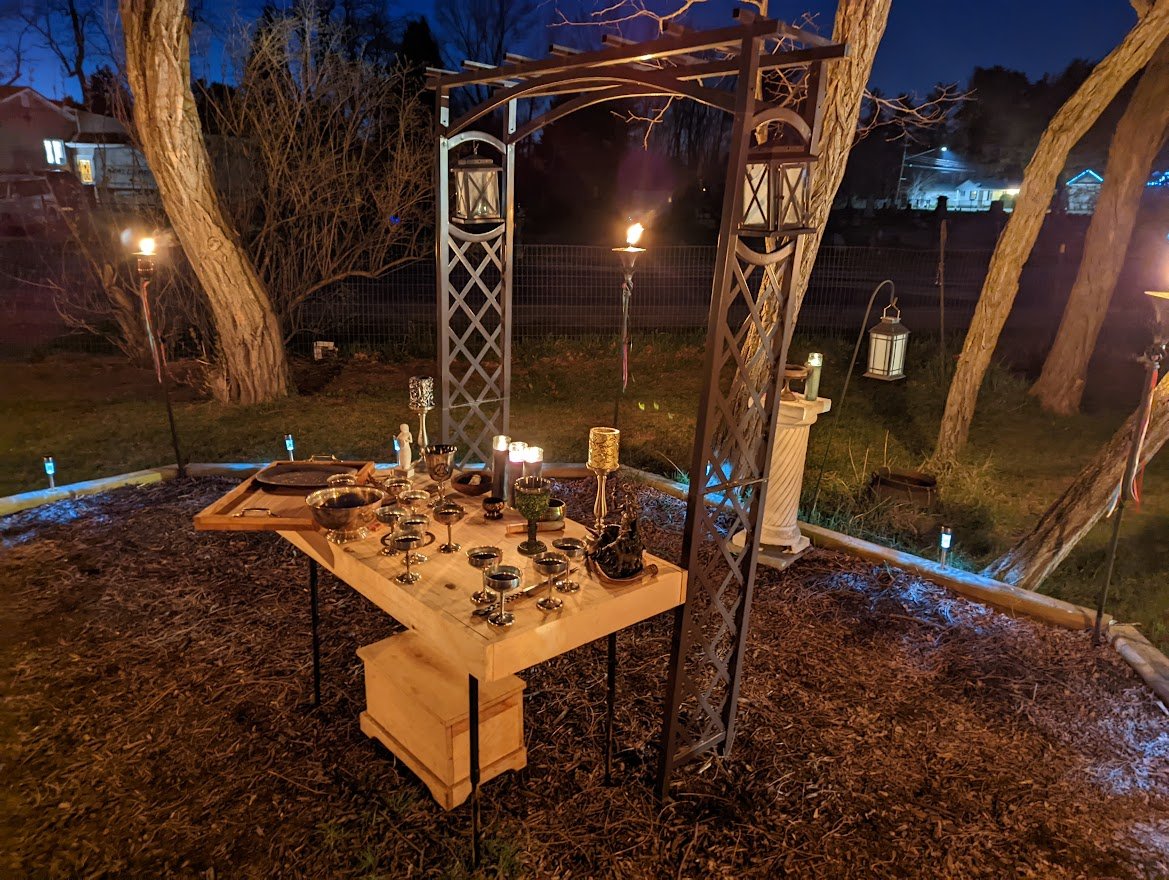
Samhain
What is Samhain?
Samhain marks the beginning of the New Year on the Wheel of the Year. It takes place from sunset October 31 until sunrise November 1. It is believed that the veil between our world and the spirit realm is thinnest at this time, and so, much of this sabbat revolves around the latter part of the life cycle: death. The harvest is over and so the fields are empty of vegetation, only holding scraps of plants that have died and dried up. The leaves are falling or have fallen from the trees and the grass is beginning to turn brown. The days are getting shorter and colder. For Pagans, this is a time of reflection and remembrance. We celebrate the bounty that we have been given from the harvest, we celebrate and remember the lives of the loved ones we have lost. We look toward the darker days coming with the intention to reflect, to let go, and to renew ourselves.
Samhain’s origins lie with the ancient Celts and Druids, celebrating the harvest and renewing their hearth fires. People let their hearth fires burn out while the final harvest was happening. Once the harvest was complete there would be a great bon fire and celebration and everyone would take home a burning ember to relight their hearth fire. The Celts also believed that the veil between worlds was the thinnest on this night and that the spirits of those who had passed could come and visit, and that Faeries and other beings roamed the earth as well. The Celts would dress up as animals or other creatures to protect themselves from the Fae and other supernatural beings that they believed wandered the earth on that night looking for unwitting victims, a tradition that would become part of what we know as modern-day Halloween.
By the Middle Ages, more customs and traditions had come to be that would mold the sabbat into what we know now. Turnips suspended on strings were carved and held a burning coal to ward off malevolent spirits, creating the first Jack O’ Lanterns. This custom evolved into what we recognize today when the Irish traded their turnips for pumpkins. These fiery protectors are still a beloved custom and have become an artform. Not only has carving itself become very detailed and creative, but some carve sigils or runes into the candles used to light the pumpkins or rub their insides with spices for added protection.
The Middle Ages also brought about the tradition of the “dumb supper.” This is when, prior to a feast or potluck, a space is set for the spirits of loved ones and they are invited to join. The evening is spent reminiscing about those who have passed and catching them up on the news of the past year. The dumb supper is still observed by some modern Pagans, along with other newer customs. Sometimes altars are created with pictures of loved ones – think Day of the Dead, but more somber. We make recipes that remind of our lost loved ones – perhaps a cake or cookie that your grandmother used to make for you that always makes you think of her, or a dish you used to make your father for his birthday because it was his favorite. We tell stories and jokes, we laugh and we cry, and our hearts are full.
Samhain correspondences, or things we associate with this sabbat, are seasonal things that we associate with that time of year. Food correspondences would be pumpkins, squash, apples, cider, turnips and other root vegetables, and stews. Spices and herbs associated with Samhain include rosemary, sage, cinnamon, clove, mugwort, nettle, and many more. Colors are orange, black, red, brown, yellow, and grey. Spell work often done at this time of year includes divination, banishing, releasing bad habits, letting go of that which does not serve, protection, honoring the ancestors, and more. Crystal for Samhain include jet, black obsidian, black onyx, snowflake obsidian, bloodstone, smokey quartz, carnelian, black moonstone, red garnet, etc – think of minerals that coincide with the color correspondences. There are also correspondences for deities, decorations, flowers, incense, activities, etc.
